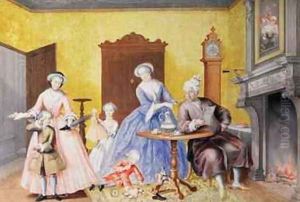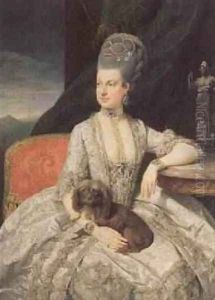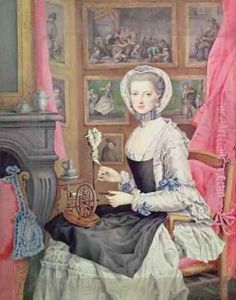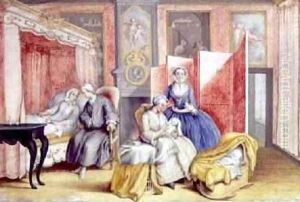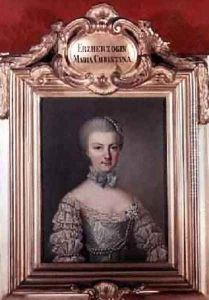Archduchess of Austria Maria Christine Paintings
Maria Christina, Duchess of Teschen (Maria Christina Johanna Josepha Antonia; 13 May 1742 – 24 June 1798), was an Archduchess of Austria and a daughter of Empress Maria Theresa and Emperor Francis I. She was born at the Hofburg Palace in Vienna and was the fifth child and fourth daughter of her parents' sixteen children. Unlike her siblings, Maria Christina, often called 'Mimi' within the family, enjoyed a privileged position with her mother, attributed to her birth on the Empress's birthday, and was said to be her mother's favorite child. This favoritism was noted within the imperial family and caused a certain degree of friction.
Maria Christina was known for her intelligence and her interest in art and culture, which were nurtured by her parents. She was also involved in politics, often acting as her mother's confidante and advisor. Her marriage to Albert of Saxony, Duke of Teschen, was unique among her siblings for being a love match, rather than a political alliance. The couple married in 1766, and their union was described as a very happy one. Albert and Maria Christina shared a passion for art and became significant art patrons, amassing an important collection, parts of which became foundational to the Albertina museum in Vienna.
During her lifetime, Maria Christina held significant influence, especially in the Austrian Netherlands, where she and her husband served as joint Governors-General from 1781 until 1789. Her governance was marked by efforts to modernize the administration and to improve the welfare of the people, although her tenure was marked by challenges, including the Brabant Revolution which signaled the growing unrest in the region that would eventually lead to the dissolution of Austrian control.
Maria Christina's legacy is complex. On one hand, she is remembered for her cultural contributions and patronage of the arts, which have had a lasting impact on Austrian cultural institutions. On the other hand, her political role and the favoritism she enjoyed have been subjects of historical scrutiny. Despite the controversies, her personal qualities, her deep relationship with her husband, and their shared contributions to the arts make her a notable figure in the history of the Habsburg dynasty. She died in 1798 and was buried in the Tuscan Vault of the Imperial Crypt in Vienna, where a monument by Antonio Canova, commissioned by her husband, marks her grave.
